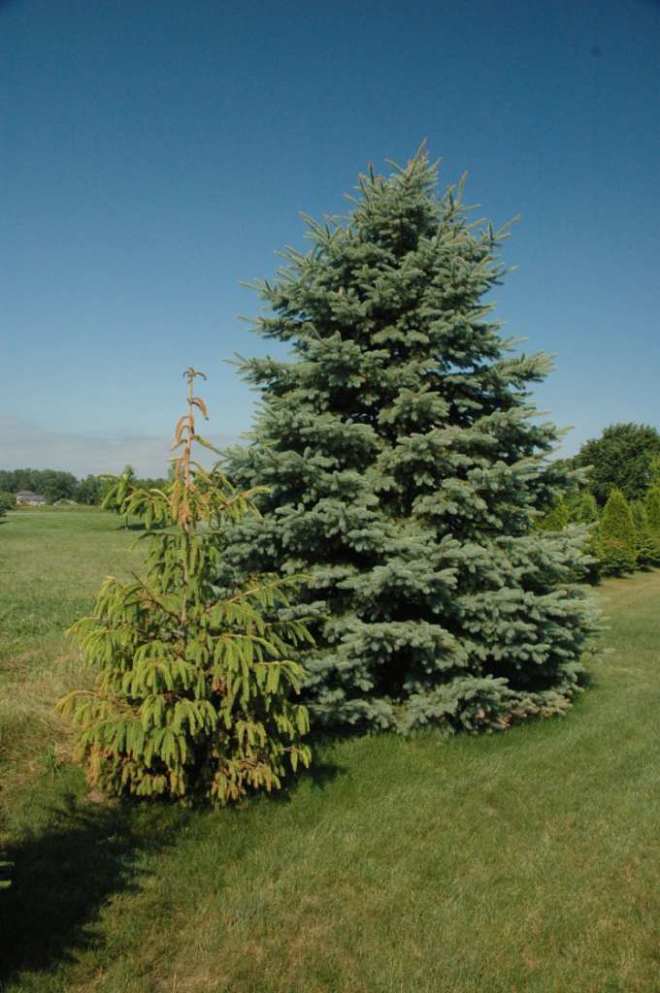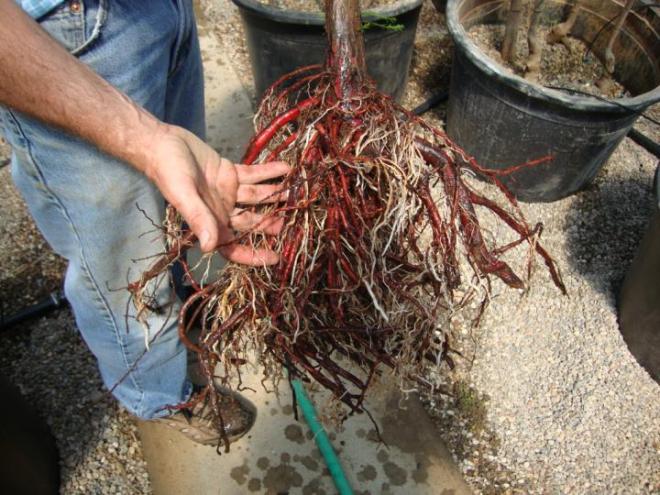I’ve been continuing to track some of the reports of injury to conifers associated with the new herbicide, Imprelis. Interest in the problem is likely to escalate given a front page article in the Sunday’s Detroit FreePress. http://www.freep.com/article/20110710/NEWS06/107100467/New-lawn-chemical-chief-suspect-mysterious-deaths-trees
I visited about ten sites last week with an applicator that had used Imprelis this spring. The landscaper was a certified applicator with about 15 years of experience with herbicides, insecticides and fungicides, who was knowledgeable about his chemicals and plants. We saw bout 50 trees, mostly pines and spruces with varying levels of injury. The typical symptoms were brown or off-color needles, and stunted or twisted shoots. Damage was mostly limited to the current flush of growth, resulting in a distinctive pattern of growth. In many cases, there was evidence of spiral movement up the trunk of the tree. The most rapid growing points (usually terminal leaders) were most severely affected. Based on my experience with other forms of herbicide injury and other types of environmental damage, I suspect all but the most severely injured trees would recover is given enough time and some corrective pruning. The problem, of course, is that most homeowners don’t want to wait around while the tree in their yard tries to rally.
Some photographic ‘highlights’






The $64 question now becomes, “What happened?” In order to receive registration from the US EPA, each new herbicide has to go through extensive testing. According to DuPont, over 400 tests were conducted with Imprelis. Despite some claims elsewhere on the internet, this testing included independent university trials on spruces and pines at up to 4x the labeled rate. The key to unlocking the mystery of Imprelis injury will probably lie in understanding how conditions in actual application conditions differed from the testing.
















